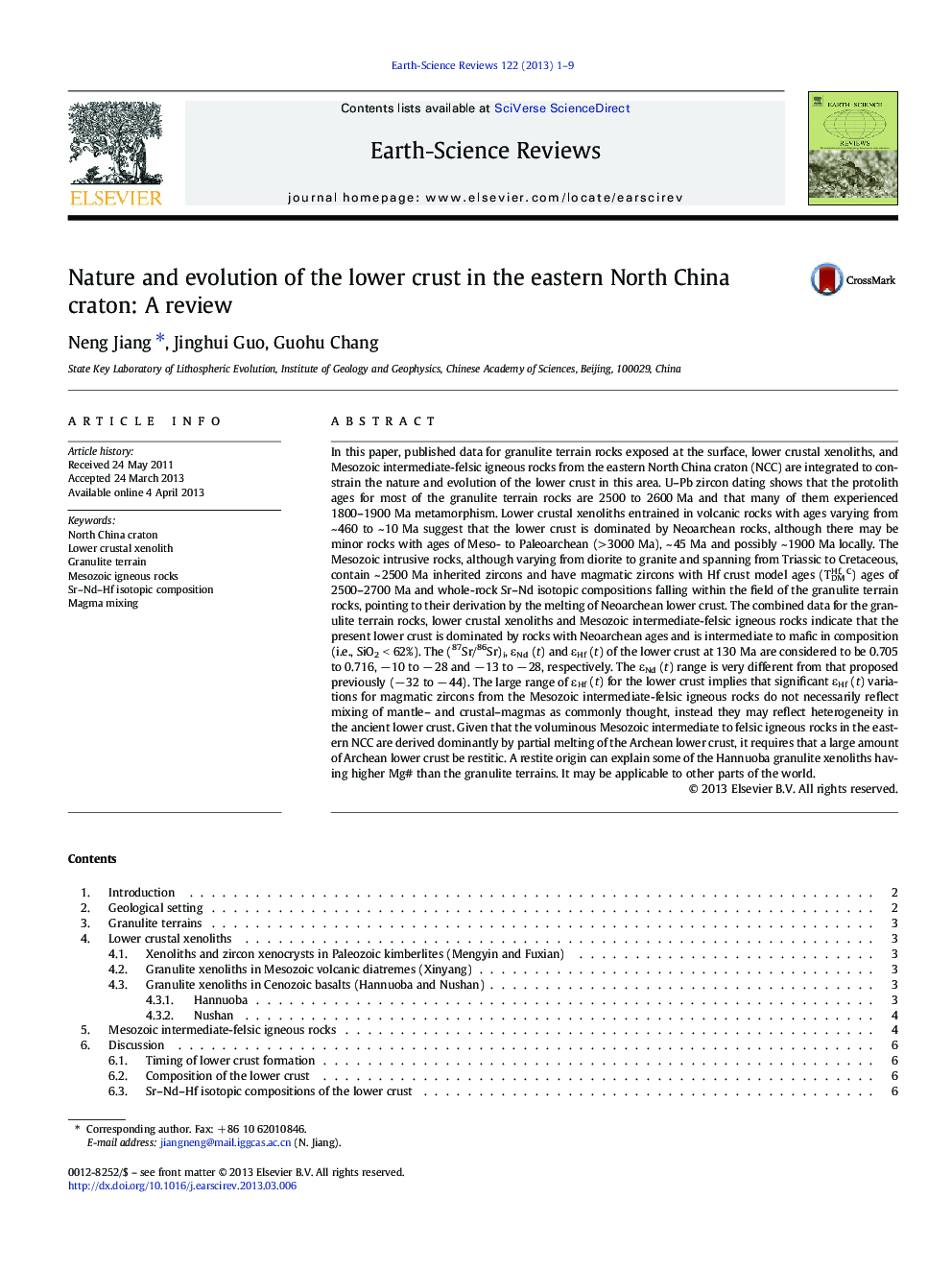| کد مقاله | کد نشریه | سال انتشار | مقاله انگلیسی | نسخه تمام متن |
|---|---|---|---|---|
| 4725840 | 1639980 | 2013 | 9 صفحه PDF | دانلود رایگان |
In this paper, published data for granulite terrain rocks exposed at the surface, lower crustal xenoliths, and Mesozoic intermediate-felsic igneous rocks from the eastern North China craton (NCC) are integrated to constrain the nature and evolution of the lower crust in this area. U–Pb zircon dating shows that the protolith ages for most of the granulite terrain rocks are 2500 to 2600 Ma and that many of them experienced 1800–1900 Ma metamorphism. Lower crustal xenoliths entrained in volcanic rocks with ages varying from ~ 460 to ~ 10 Ma suggest that the lower crust is dominated by Neoarchean rocks, although there may be minor rocks with ages of Meso- to Paleoarchean (> 3000 Ma), ~ 45 Ma and possibly ~ 1900 Ma locally. The Mesozoic intrusive rocks, although varying from diorite to granite and spanning from Triassic to Cretaceous, contain ~ 2500 Ma inherited zircons and have magmatic zircons with Hf crust model ages (TDMHf, C) ages of 2500–2700 Ma and whole-rock Sr–Nd isotopic compositions falling within the field of the granulite terrain rocks, pointing to their derivation by the melting of Neoarchean lower crust. The combined data for the granulite terrain rocks, lower crustal xenoliths and Mesozoic intermediate-felsic igneous rocks indicate that the present lower crust is dominated by rocks with Neoarchean ages and is intermediate to mafic in composition (i.e., SiO2 < 62%). The (87Sr/86Sr)i, εNd (t) and εHf (t) of the lower crust at 130 Ma are considered to be 0.705 to 0.716, − 10 to − 28 and − 13 to − 28, respectively. The εNd (t) range is very different from that proposed previously (− 32 to − 44). The large range of εHf (t) for the lower crust implies that significant εHf (t) variations for magmatic zircons from the Mesozoic intermediate-felsic igneous rocks do not necessarily reflect mixing of mantle– and crustal–magmas as commonly thought, instead they may reflect heterogeneity in the ancient lower crust. Given that the voluminous Mesozoic intermediate to felsic igneous rocks in the eastern NCC are derived dominantly by partial melting of the Archean lower crust, it requires that a large amount of Archean lower crust be restitic. A restite origin can explain some of the Hannuoba granulite xenoliths having higher Mg# than the granulite terrains. It may be applicable to other parts of the world.
Journal: Earth-Science Reviews - Volume 122, July 2013, Pages 1–9
